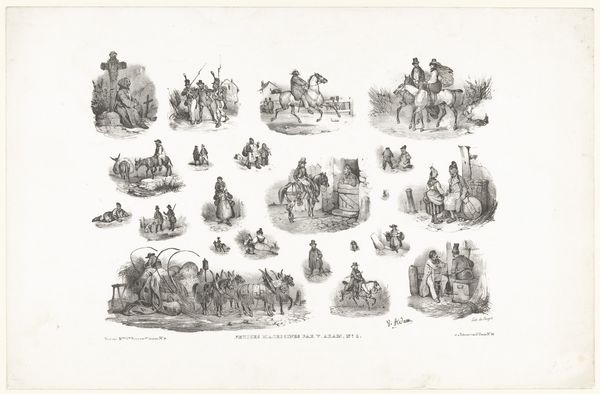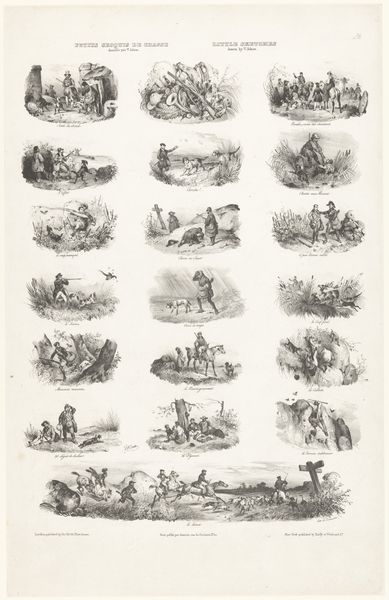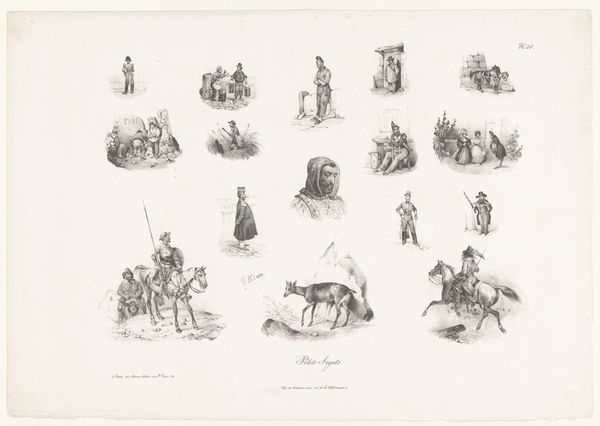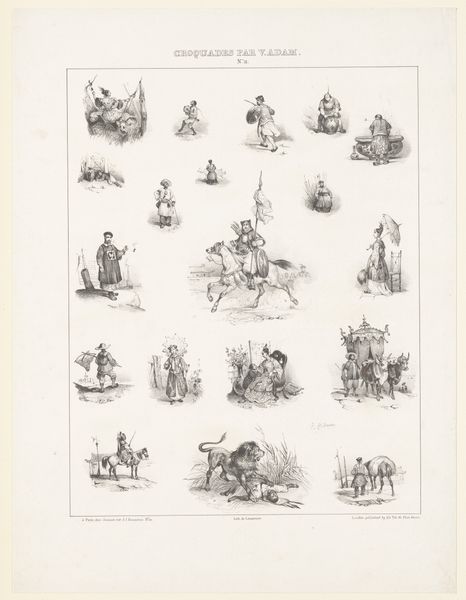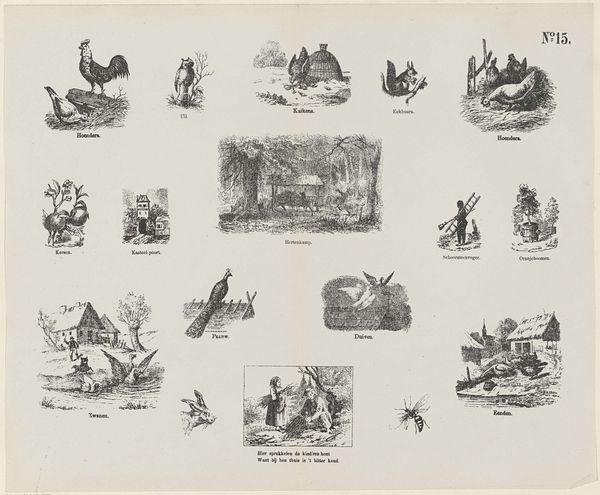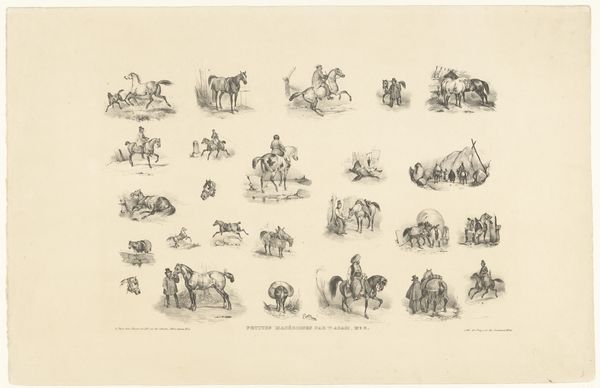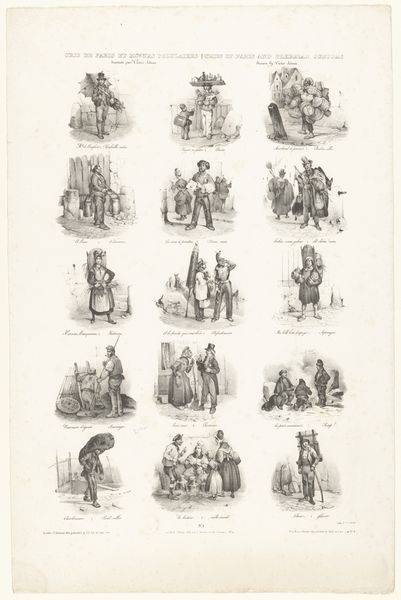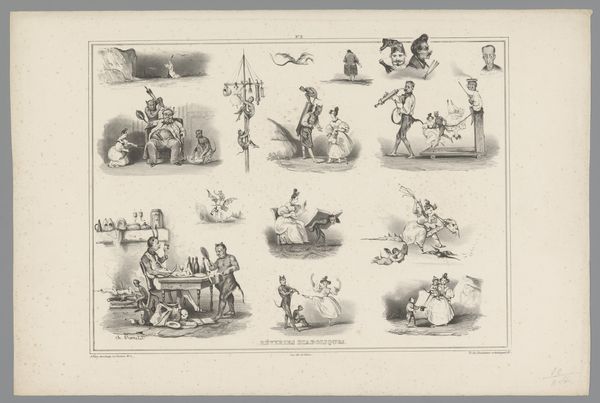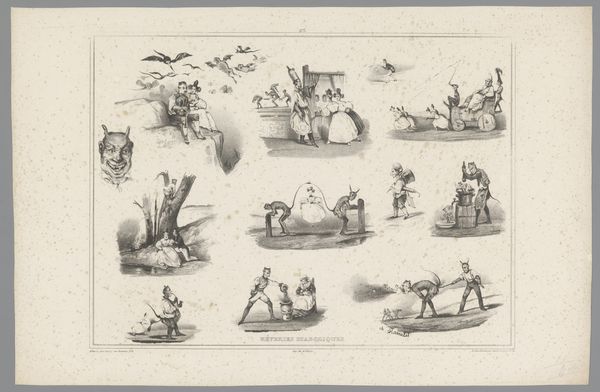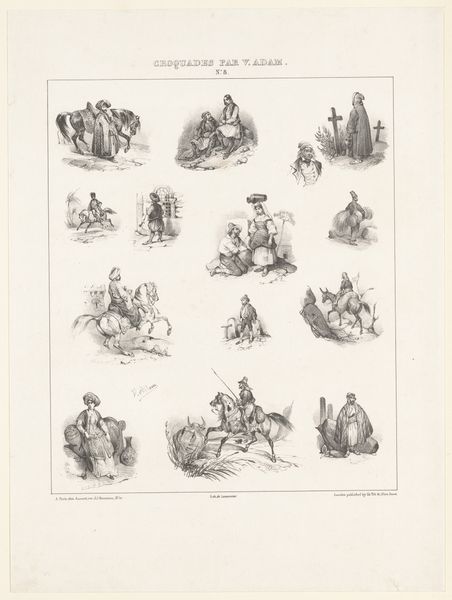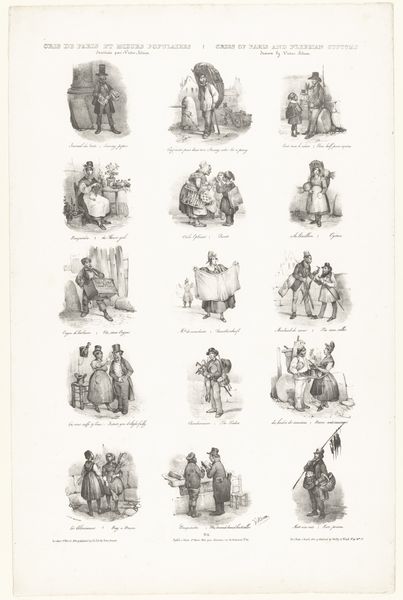
drawing, print, ink, engraving
#
drawing
#
narrative-art
# print
#
figuration
#
ink
#
romanticism
#
genre-painting
#
engraving
Dimensions: height 315 mm, width 487 mm
Copyright: Rijks Museum: Open Domain
Editor: This engraving by Victor Adam, from 1842, is titled "27 voorstellingen van mensen en dieren," or "27 Depictions of People and Animals." I'm struck by its overall organized yet whimsical quality. The little vignettes remind me of postage stamps, but each seems to tell its own story. What do you see in this piece, considering its historical context? Curator: What I see is a fascinating snapshot of Romanticism’s fascination with the everyday. We’re looking at a time when printmaking made imagery accessible to a broader public. How do these genre scenes speak to the socio-political realities of 19th-century Europe? Were these images meant to uplift, educate, or simply entertain? Editor: I think maybe a bit of all three? Some seem idealized, while others have a slightly satirical edge. I’m curious about how they circulated and were consumed. Curator: Exactly! Prints like these often appeared in illustrated magazines and books, shaping public opinion and taste. The rise of the bourgeoisie fueled a demand for accessible art. Do you think the arrangement of these scenes on a single sheet says something about the relationship between them? Editor: Maybe, since they are viewed together, that implies some intended connection or contrast... It's fascinating to think how the arrangement plays into that public perception. It really drives home how even seemingly simple artworks have so much historical weight behind them. Curator: Absolutely. The public role of art shifted dramatically in the 19th century. Analyzing works like this helps us understand the dialogue between the artist, the audience, and the evolving cultural landscape. Editor: I never really thought about art having so many stakeholders involved in this era. I’m now considering my own assumptions about the public access and artistic agency during that period.
Comments
No comments
Be the first to comment and join the conversation on the ultimate creative platform.
